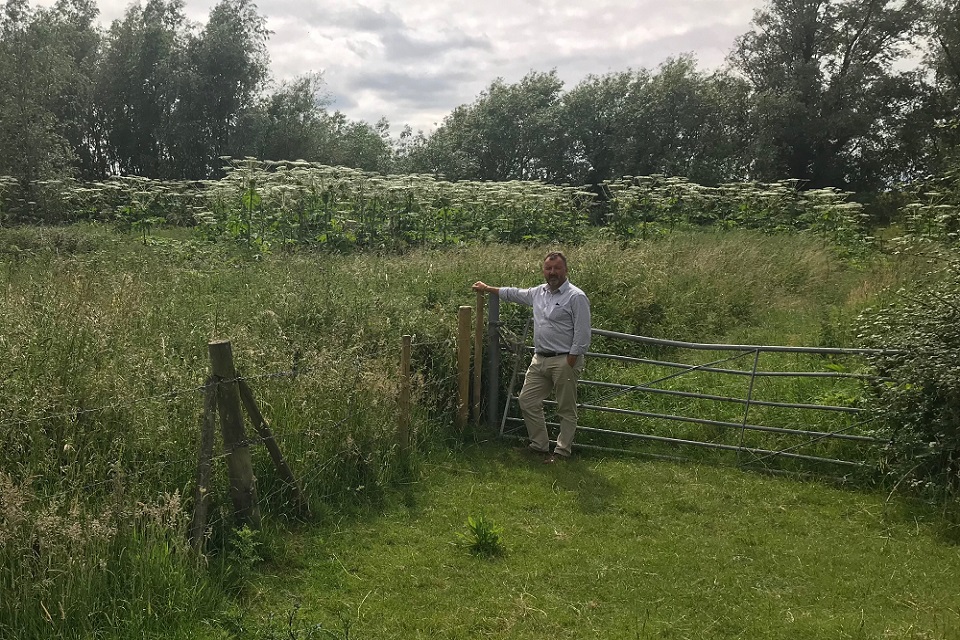Thousands of Giant Hogweed plants cleared from Denver complex
The Environment Agency is two years into a project to eradicate Giant Hogweed at the Denver Complex in Norfolk.

If you spot Giant Hogweed you should report it on the iRecord app/website.
The invasive plant, which can grow to over 8ft tall, had largely taken over a piece of land adjacent to the tidal River Ouse. This meant the land was unable to be used as the plant is toxic to humans. Coming into contact with the sap or tiny hairs the plant produces can result in blisters, rashes and uncomfortable swellings.

The Giant Hogweed before it was removed.
In 2019 the Environment Agency started their mission to clear the land and stop the non-native plant spreading to nearby arable land. The site was cleared with a specialist remote controlled mower on a day in January when the plant stems were completely sap free. Once finished the mower had to be thoroughly cleaned to ensure there were no seeds trapped within it. This removed the risk of them being transported to other sites.
Giant Hogweed seeds remain viable in the seed bank for up to 5 years. So regular visits throughout 2019 to treat the newly germinated seeds with herbicide was necessary. In 2020 a small number of Giant Hogweed seeds were still present at the site and required treatment.
Now, the site has been completely transformed from an infested piece of land into a modern training facility that’s rich in biodiversity.

The site cleared of the Giant Hogweed.
Darren Noble, of the Environment Agency who led on the Giant Hogweed removal said:
It is great to see what we have achieved on this site. The hogweed was well established and was starting to spread further, but we stopped that and have completely transformed the area.
Giant Hogweed is not native to the UK. It was first introduced to the UK in the 19th century where it escaped and naturalised in the wild. It can now be found throughout most of the UK, especially on river banks where the seeds are transported by water. If you spot Giant Hogweed you should report it on the iRecord app/website